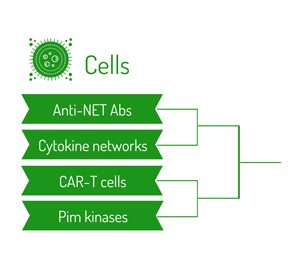 Editor’s note: RheumMadness is the place for everyone crazy about rheumatology to connect, collaborate, compete and learn together. During RheumMadness, rheumatology concepts represent teams that compete against each other in a tournament, much like basketball teams do in the NCAA’s March Madness tournament. In a series for The Rheumatologist, readers will get a chance to read the scouting reports for each concept team. These reports are written by rheumatology fellows from 13 programs throughout the U.S.
Editor’s note: RheumMadness is the place for everyone crazy about rheumatology to connect, collaborate, compete and learn together. During RheumMadness, rheumatology concepts represent teams that compete against each other in a tournament, much like basketball teams do in the NCAA’s March Madness tournament. In a series for The Rheumatologist, readers will get a chance to read the scouting reports for each concept team. These reports are written by rheumatology fellows from 13 programs throughout the U.S.
Don’t forget to submit your RheumMadness 2022 bracket by March 25. The more your picks match those of our Blue Ribbon Panel of rheumatologists, the more points you get. Learn more about the panel and how the brackets work online.
Connect with RheumMadness by subscribing to the podcast and joining the conversation on Twitter, #RheumMadness. Learn more on the RheumMadness website.
Region: Cells Team: Cytokine Networks
Cytokines are famously confusing for everyone. To illustrate why, try typing the word cytokine into Google images. Without fail, you will find diagrams filled with countless arrows, seemingly illustrating how cytokines go everywhere and do everything in the immune system. It’s tempting to throw up your hands and say, “It’s just too complicated.” However, slowly but surely, the field of rheumatology is making progress in detangling the cytokines web, finding order in the inflammatory mess.
In the base article for this team, researchers from the PRECISE Systemic Autoimmune Diseases (PRECISESADS) collaboration identified a pro-inflammatory cytokine network shared by four rheumatic conditions: systemic lupus erythematosus (SLE), Sjögren’s syndrome, rheumatoid arthritis (RA) and systemic sclerosis (SSc).1 This cytokine network is defined primarily by elevations in CXCL10, interleukin (IL) 2, IL-6 and tumor necrosis factor (TNF).
 Intriguingly, patients with the highest levels of this pro-inflammatory cytokine profile have more severe clinical manifestations, regardless of their underlying diagnosis. Example: This cytokine network is associated with kidney involvement in SLE; extra-glandular manifestations in Sjögren’s syndrome; and pulmonary, renal or vascular manifestations in SSc.
Intriguingly, patients with the highest levels of this pro-inflammatory cytokine profile have more severe clinical manifestations, regardless of their underlying diagnosis. Example: This cytokine network is associated with kidney involvement in SLE; extra-glandular manifestations in Sjögren’s syndrome; and pulmonary, renal or vascular manifestations in SSc.
The investigators also demonstrated unique associations between this pro-inflammatory cytokine network and alterations in key immune cell populations (e.g., plasmablasts, memory B cells, etc.) in each condition.
Finally, the researchers explored how this inflammatory cytokine network may participate in the communication between B and T cells through a variety of co-culture experiments in vitro.
Just like cytokines themselves, the base article for this team is complex. However, the overall message is one of simplicity, showing how cytokine networks can unify disparate rheumatic diseases through shared pathogenic mechanisms.



